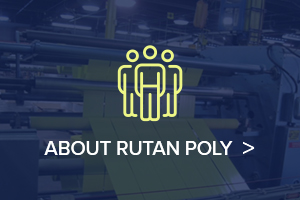Think about it, what happens to the plastic bags that do not end up in our forests, seas, and surroundings? Well, just like other modern day materials, they are recycled into a variety of products.
No doubt, the recycling rates currently are deplorable and need to improve significantly, especially considering the fact that there are recycling facilities available in most cities in the US.
However, we hope that through this eBook, not only will you be encouraged to reap the benefits of plastic bags by using them, but also play your all-important part in saving the environment by reusing and recycling them responsibly.
So, have you ever wondered what happens to the plastic bags you have recycled? In this section, you will learn about the products that are manufactured using plastics from your recycled bags.
New Bags
Whether you take them to a recycling center, drop them off at a bag recycling collection facility, or place them in a recycling bin, these plastic bags can have more than just one life. This is evident from the fact that most of the recycled bags today, are melted down and used for making new bags! Ironic, isn’t it?
As compared to making plastic bags from scratch, this process is a lot more efficient and gentler for the environment. It also saves a massive amount of petroleum, which would have otherwise been used for producing new plastic bags. Moreover, petroleum mining and purification demand various other measures to ensure the safety of the environment as well as of employees (check out Oilfield Safety Training for more information).
While it is crucial to conserve natural oils and gases, there can be other various reasons that may cause water pollution and wastage of fuel. For example, machinery malfunction at an oil plant may lead to oil spillage. But such accidents can be deterred through advanced technology for machines instant correction or shutdown. To learn more about such tech through the link here or explore a few blogs online.
Similarly, plastic waste can cause water pollution on a major level, and recycling these plastic bags could assist a bit in reducing the pollution. During the recycling process, the factories can employ techniques for various functions. Most recycling facilities have the necessary separation mechanisms as well as material processing equipment that are required to ensure proper recycling of plastics in various forms. Through these, usable plastics are separated from the rest of the recyclables and then sent for further processing.
Craft
Did you know that several crafters make amazing crafts out of plastic bags lying around at home? Yes, other than being reused for various applications, plastic bags are also being increasingly used in the crafts industry.
They are used for making yarn, tote bags, raincoats, headbands, and even whole outfits – amazing, right! Why don’t you use plastic bags for your next craft project? Who knows, you might just come up with some creative use.
Composite Lumber
According to statistics, a majority of the plastic bags recycled in the US wind up as composite lumber. It is a mix of wood scraps and plastic bags, such as old pallets and sawdust. These are all things that a homeowner would likely send off in a dumpster from the likes of Just Rubbish Removal, after a DIY project or during a renovation. This can also come from commercial construction spaces. And they can be used productively instead of sending them to the landfill.
This lumber is durable, long-lasting, and requires little maintenance, making it ideal for outdoor and decking construction. Several top manufacturers are producing this type of lumber in the country, therefore further increasing the demand of recycled plastic bags.
Nanotechnology
The PBS NewsHour website states that a portion of recycled plastic bags, end up being utilized by the nanotechnology field. You may be thinking, “What use does an advanced field like nanotechnology have for plastic bags?” Well, turns out that scientists have developed a new method to produce carbon nanotube membranes by recycling plastic bags!
These membranes can potentially be used for biomedical innovations, and energy storage. More importantly, this is an effective solution to minimize environmental pollution created by manufacturing valuable goods.
Film & Sheeting
LDPE (Low-density polyethylene) is a common material used in the manufacturing of plastic bags. It is flexible, transparent, and has the ability to resist strong chemicals, such as bases and acids.
Due to its durability, toughness, and flexibility, LDPE from recycled plastic bags is used to make products like shipping envelopes, trash bags, film and sheeting, as well as several others that require these features.
As you can see, recycled plastic bags are used for making various products. Recycling plastic bags not only reduces the consumption of petroleum, but also pollution, waste, and energy.
Go through the sub-chapter (if you have not already) ‘The Benefits of Recycling Plastic Bag’ for more information regarding the benefits of recycling these bags we heavily rely on.
As we conclude this chapter, we hope you are now motivated and encouraged enough to play a responsible role in the use of plastic bags.





